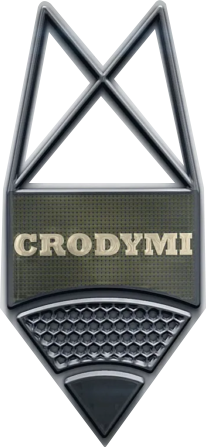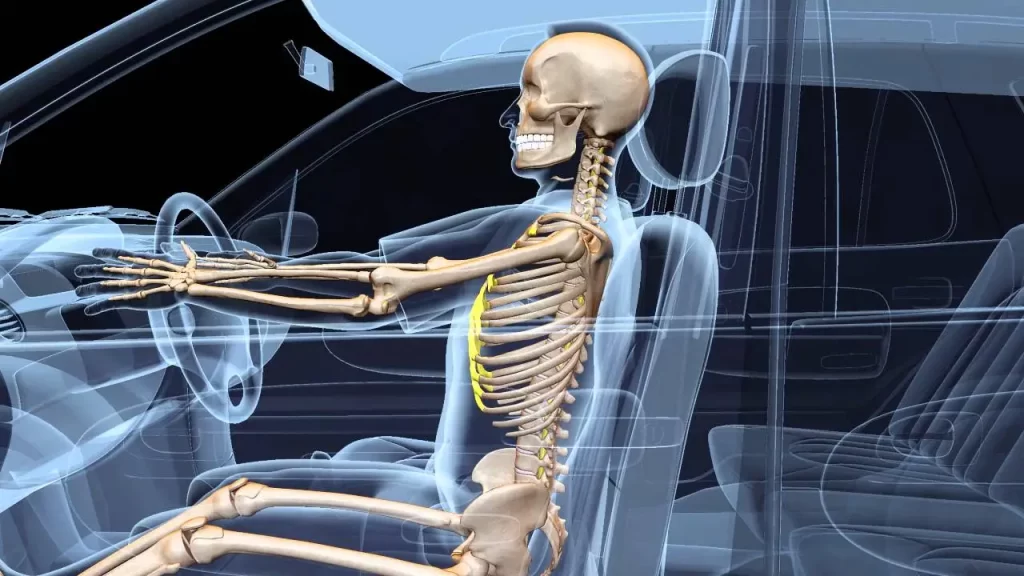Auto accident reconstruction is essential for understanding how and why crashes happen. Each year, thousands of complex collisions require expert analysis to determine fault, establish liability, and improve road safety. But how do experts figure out what really happened? What clues do damaged vehicles and skid marks reveal?
Investigators use physics, engineering, and forensic science to build a clear timeline from chaos. Advanced tools and techniques help answer critical questions like: Who was at fault? Could it have been prevented? Whether you’re in law, insurance, or directly affected, understanding the basics can help you navigate this complex process.
Key Principles and Concepts
Accident reconstruction relies on core principles that form the foundation of this technical field. Each investigation employs these fundamental concepts to determine how collisions unfold with scientific precision. Let’s break down its foundational ideas.
-
Scientific Methodology:
Crash reconstruction is a scientific process that helps examiners recognize how accidents occur by using physics, math, and real-world data. It starts with collecting evidence like skid marks, vehicle damage, and road conditions, then moves into analysis using tools like kinematics and mathematical models. At its core, this process follows the scientific method: experts form theories about the crash and test them against the evidence.
For example, if there are skid marks on the road, they might calculate how fast the car was going to see if speeding played a role. This method removes guesswork and builds conclusions based on facts. Everything is carefully documented to ensure findings are accurate and can hold up in court, especially in cases involving legal or insurance claims.
-
Multidisciplinary Approach:
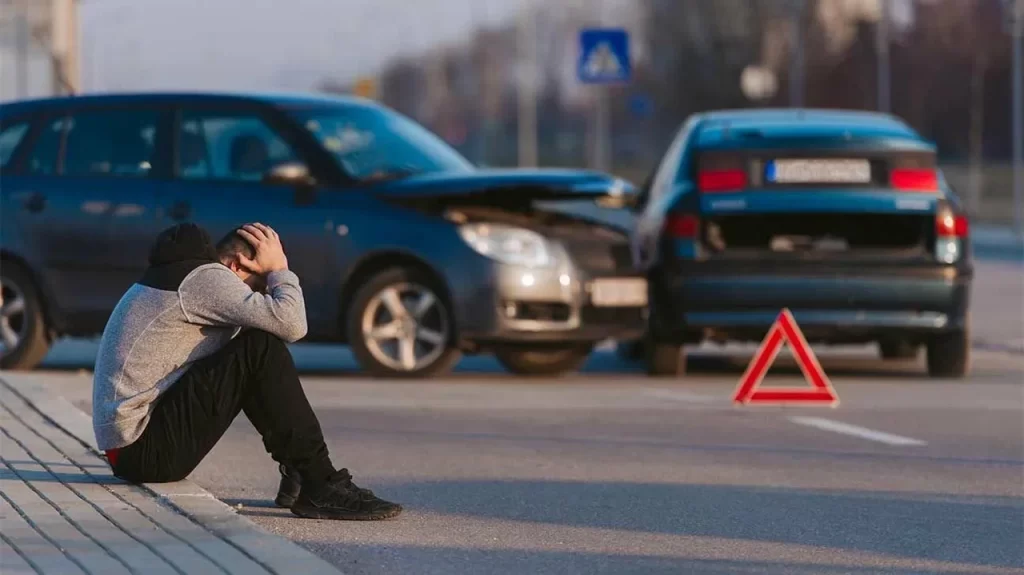
A single traffic accident investigation is rarely handled by one expert. Engineers analyze vehicle damage using crash dynamics and tools like 3D scanners, while law enforcement secures evidence (skid marks, witness statements). Medical professionals assess injuries or impairments, such as alcohol use, through toxicology reports. Legal teams interpret findings to establish liability.
Collaboration minimizes errors, a 2022 SAE International study found multidisciplinary investigations reduced factual inaccuracies in crash reports by 43%. This teamwork ensures a complete understanding of the incident, balancing technical, medical, and legal insights to support fair insurance settlements and courtroom decisions.
-
Physical Evidence:

Physical evidence is the backbone of any traffic accident investigation, providing objective data that helps experts understand exactly what happened. From the moment investigators arrive at a crash scene, they begin collecting and analyzing various forms of evidence to piece together the sequence of events.
Here are some key types of physical evidence:
- Skid marks: Reveal vehicle speed, braking intensity, and direction. For example, long, straight marks often indicate hard braking, while curved marks suggest swerving.
- Vehicle deformation: Damage to crumple zones, bumpers, or doors clarifies impact angle and force. A crushed front end typically signals a head-on collision.
- Debris patterns: Shattered glass, plastic, or fluids trace the crash’s location and sequence. Concentrated debris fields often pinpoint the initial impact site.
- Gouge marks and tire treads: Road gouges mark where metal scraped pavement, confirming collision points. Tire treads help identify vehicles involved or sudden maneuvers.
- Event Data Recorders (EDRs): Modern vehicles often have these “black boxes” that record critical pre-crash data like speed, braking, and seatbelt use.
Basic Steps in Accident Reconstruction
| Step | Description |
| Data Collection | Gather evidence from the scene: photographs, measurements, vehicle inspections, witness statements258. |
| Analysis | Apply physics and engineering principles to interpret the evidence. Calculate speeds, directions, and forces using equations for momentum, energy, and restitution167. Utilize computer simulations for complex scenarios15. |
| Communication | Summarize findings in clear reports or expert testimony, often for use in legal proceedings25. |
Data Collection is crucial and time-sensitive, using tools like drones and 3D scanners to capture evidence before it’s lost.
During Analysis, experts apply physics principles and software like PC-Crash to model the crash and test theories.
Finally, Communication simplifies findings into clear reports and visuals, helping explain how factors like speed and road conditions contributed to the accident.
Fundamental Physical Parameters
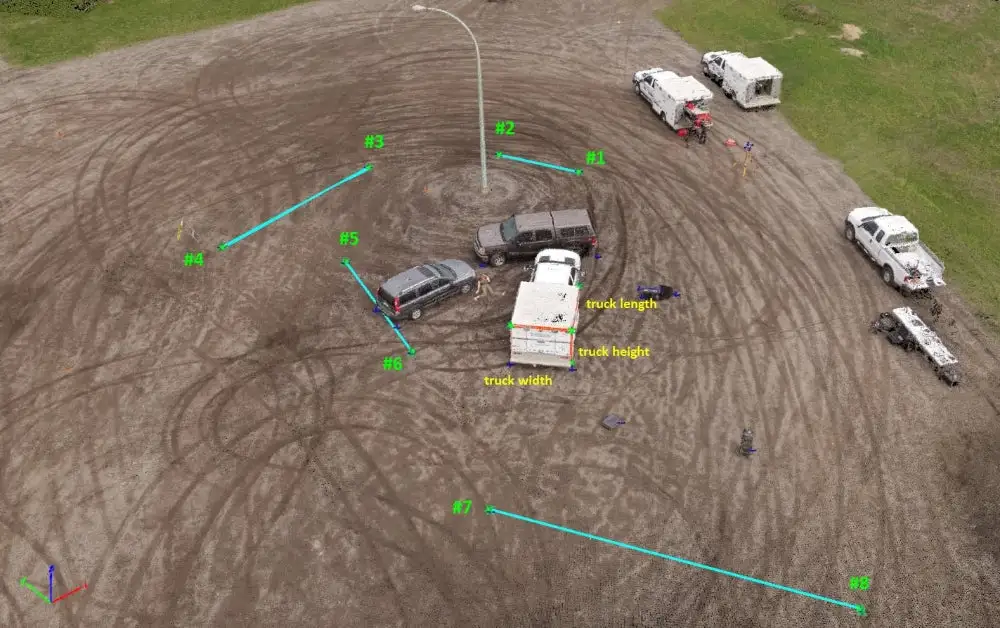
Physical measurements form the foundation of every accurate accident reconstruction, providing the raw data needed for scientific analysis. These Four key parameters underpin every accident reconstruction analysis.
-
Length (Distance)
Distance measurements are essential in accident reconstruction, helping establish spatial relationships at the crash site. These measurements, taken in inches, feet, or meters, are used to assess whether drivers had enough time and space to avoid a collision. By analyzing distances between vehicles, intersections, and debris patterns, investigators can determine if a driver had enough room to maneuver safely and whether the crash was unavoidable.
-
Time
Time, measured in seconds, plays a crucial role in determining the sequence of events leading to a crash. Time-distance analysis helps assess whether drivers had enough time to react based on braking, acceleration, and deceleration. By calculating stopping time, investigators can see if traffic laws were violated and whether the driver had enough time to avoid the crash, using formulas like t = m × v/F for accurate results.
-
Force
Force measures the impact intensity during a collision, calculated using energy principles. By analyzing the kinetic energy transfer at impact, investigators determine collision severity. The formula F = mv²/2d shows how extending the collision distance can reduce the impact force. Modern vehicle designs use this principle, collapsing on impact to reduce force. Accurate force calculations are essential for reconstructing crash dynamics and understanding the severity of the collision.
-
Mass
Mass plays a vital role in accident reconstruction, affecting calculations like vehicle dynamics and pre-crash velocity. Even small errors in mass estimation, such as vehicle weight or center of gravity, can lead to significant inaccuracies. Accurate mass measurements are crucial for determining how a vehicle’s weight and loading conditions influence control, stopping ability, and overall crash behavior, ensuring precise reconstruction of all crash phases.
Core Analytical Techniques
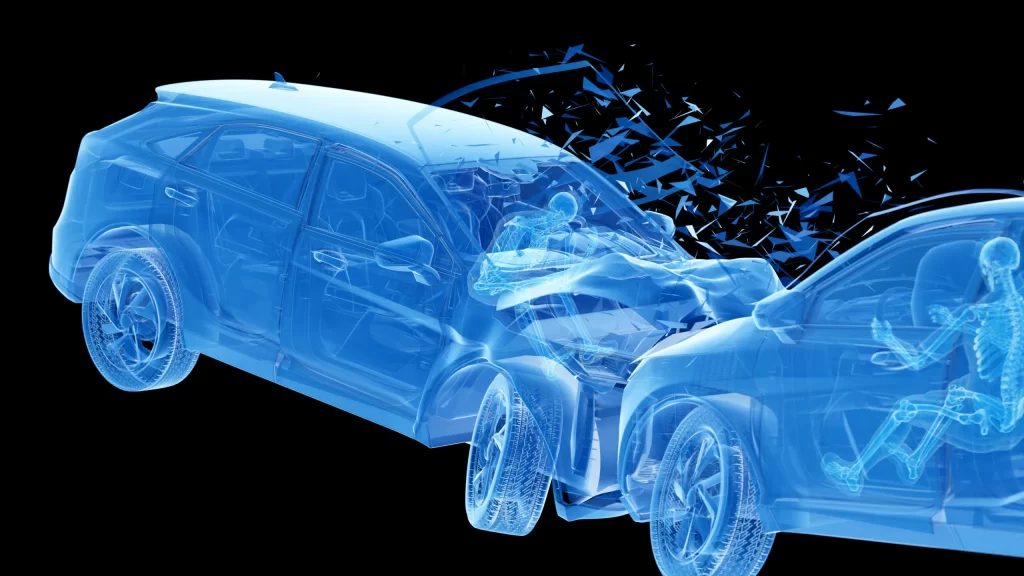
Successful traffic accident investigation relies on key analytical techniques that use science and math to accurately reconstruct crash events and understand their dynamics.
-
Momentum Analysis
Momentum analysis helps experts figure out how fast vehicles were moving before and after a crash by applying the law of conservation of momentum. It relies on physical evidence like skid marks and rest positions. By applying vector analysis and solving triangles using the Law of Sines and Cosines, investigators can estimate impact speeds even when only partial data is available, making it essential for accurate car crash investigation.
-
Energy Analysis
Energy analysis evaluates the force of impact by measuring energy loss during a collision, often using the Triangle Method. This approach is especially helpful when vehicle stiffness data is missing. It calculates crash severity using damage geometry from photos, and it’s particularly effective in analyzing side impacts and motorcycle accidents.
-
Coefficient of Restitution
This coefficient measures how much energy is retained or lost in a crash, ranging from 0 (perfectly inelastic) to 1 (perfectly elastic). It’s calculated using rebound and impact velocities. In real-world collisions, values typically fall between 0.2 and 0.6, helping investigators understand collision behavior and vehicle interactions.
-
Photogrammetry
Photogrammetry turns 2D photographs into accurate 3D measurements, useful when vehicles or crash scenes are no longer accessible. Investigators use this method to calculate crush damage, skid mark lengths, and road evidence locations. Combined with 3D laser scanning, it enhances reconstruction accuracy, especially in complex or delayed investigations.
Phases of a Crash
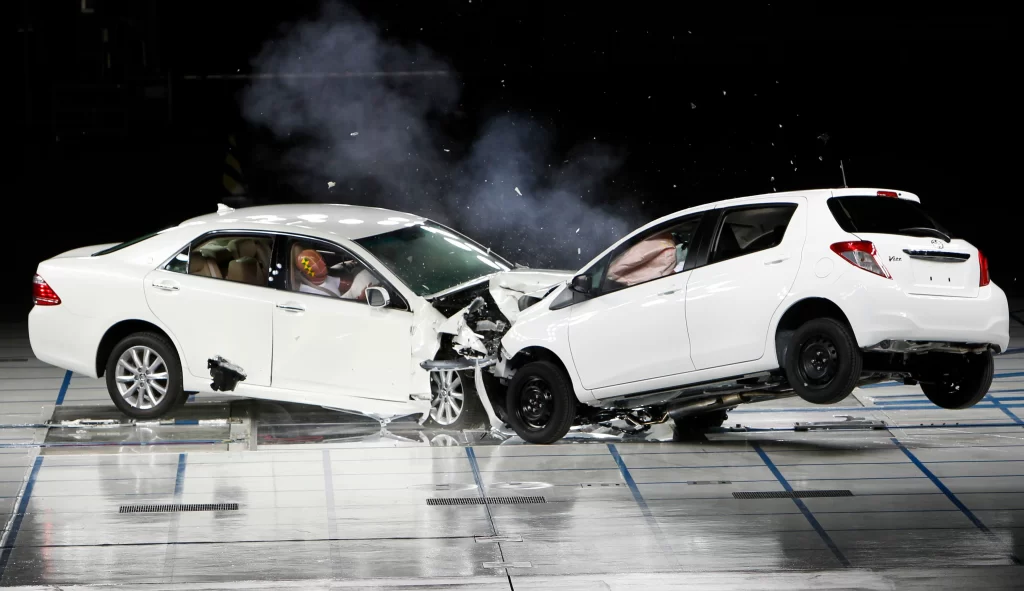
Forensic analysis breaks down collisions into three key phases; pre-impact, impact, and post-impact, each requiring a unique approach to accurately reconstruct the crash sequence.
-
Pre-Impact:
The pre-impact phase focuses on the events, decisions, and conditions leading up to the collision. Driver behavior like speeding, distracted driving, or abrupt lane changes plays a key role. Environmental factors, such as icy roads, poor visibility, or malfunctioning traffic signals, also contribute. Event Data Recorders (EDRs) in vehicles capture critical details, like braking patterns or steering inputs, in the 5–20 seconds before impact. This phase helps answer why the crash occurred, such as whether a driver failed to react to a stop sign or misjudged a turn.
-
Impact:
This is the split-second moment when vehicles collide. Kinetic energy transfers between objects, deforming metal, shattering glass, and triggering safety systems like airbags. The angle and speed of impact determine damage patterns: a head-on collision crushes front bumpers, while a T-bone crash warps door frames. Crash sensors and vehicle “black boxes” record forces exerted on passengers, which helps experts gauge injury risks. Impact analysis often reveals whether seat belts were worn or if a vehicle’s design (e.g., crumple zones) mitigated harm.
-
Post-Impact:
After the collision, vehicles may skid, roll over, or strike secondary objects. Investigators measure post-impact trajectories using skid marks, debris scatter, and final resting positions. For example, a car sliding 50 feet post-crash can indicate its speed at impact using friction equations. Environmental factors, like gravel roads or guardrails, influence movement. Drones and 3D mapping tools document these details, which are vital for reconstructing the crash sequence. This phase often uncovers overlooked details, such as a driver’s attempt to steer away post-collision.
Modern Tools and Technology
-
Computer Simulations:
Advanced software like HVE (Human-Vehicle-Environment) recreates collisions in digital environments. By adjusting variables; speed, road friction, or weather, experiments test theories about how crashes unfolded. These simulations visualize outcomes, validate hypotheses, and clarify uncertainties, making them indispensable in traffic accident investigation for courts and insurers.
The 14th International Science and Technical Conference on Automotive Safety (April 2024) highlighted improved simulation accuracy for autonomous vehicles and micromobility accidents like e-scooters and e-bikes.
-
Exemplar Analysis:
Investigators replicate collisions using similar vehicles under controlled conditions. For example, crashing a sedan with the same specifications as the accident vehicle into a barrier at 40 mph can help assess how the car deforms under similar impact conditions. This hands-on approach bridges virtual models with physical evidence, enhancing accuracy in car crash investigation and repair assessments.
Role in Legal and Insurance Contexts
Auto accident reconstruction plays a crucial role in determining liability, acting as a bridge between raw evidence and legal accountability. It transforms complex data into clear, objective findings that can make all the difference in legal cases and insurance claims. Insurers turn to detailed reconstruction reports to assess claims, ensuring settlements are based on the true sequence of events rather than assumptions or misunderstandings.
In courtrooms, expert testimony is invaluable, helping resolve disputes such as proving a driver ran a red light by syncing traffic camera footage with vehicle speed calculations. This process not only clarifies what happened but also helps ensure fairness in both legal rulings and insurance payouts, protecting all parties involved from unjust outcomes.
In Summary
Auto accident reconstruction combines science, physics, and modern technology to uncover what really happened during a crash. From analyzing skid marks to simulating crashes with software like HVE, experts transform debris and data into clear narratives. These insights are vital for insurance adjusters, lawyers, and policymakers ensuring victims receive justice, reckless drivers face consequences, and roads become safer.
As vehicles grow smarter with AI dash cams and telematics, construction evolves too, leveraging real-time data to predict and prevent accidents. Yet its core mission remains: to turn chaos into clarity, one crash at a time. Whether through courtroom testimony or highway redesigns, this field remains a cornerstone of accountability and innovation in our pursuit of safer roads.
